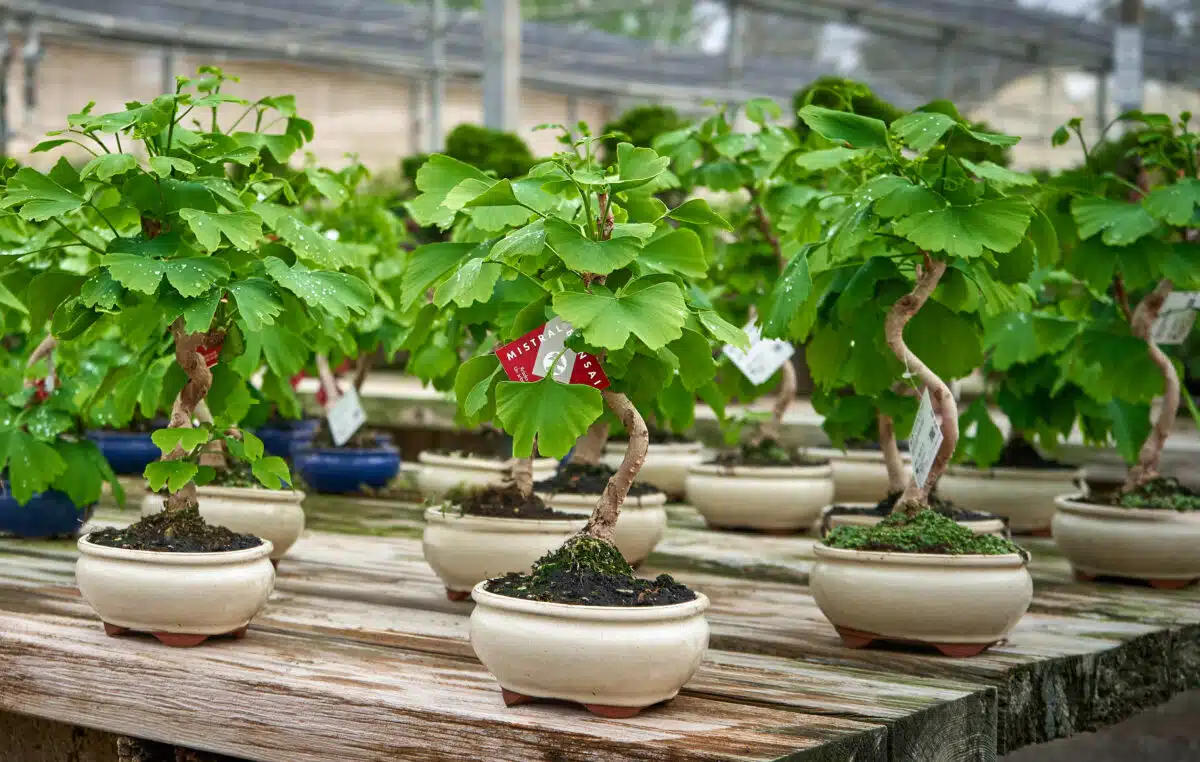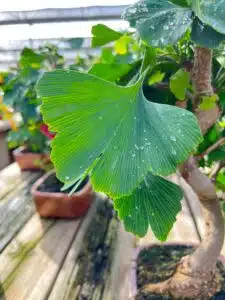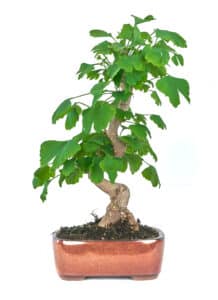Ginkgo biloba: Maidenhair tree bonsai

In the wonderful bonsai world, every tree tells a unique story, but few do so with the antiquity of the Ginkgo biloba, also known as “Maidenhair tree”. This tree has been revered by many cultures over the centuries for its longevity, strength and medicinal benefits.
Ginkgo biloba stands out for its simple elegance and remarkable longevity. Its fan-shaped leaves present a bright green in spring and summer, turning into a golden spectacle in autumn. This seasonal transition adds fascination to any space, filling the atmosphere with its serene, ever-changing aura.
A journey through history
 Ginkgo biloba is one of the oldest trees in the world, considered a living fossil due to its presence in the fossil records since 290 million years ago. Its arrival in Europe in the 18th century marked the beginning of its global spread, and today it is appreciated all over the world for its hardiness and singular beauty.
Ginkgo biloba is one of the oldest trees in the world, considered a living fossil due to its presence in the fossil records since 290 million years ago. Its arrival in Europe in the 18th century marked the beginning of its global spread, and today it is appreciated all over the world for its hardiness and singular beauty.
It is also known as the ‘tree of forty shields’ because of an interesting story dating back to the 18th century. At that time, a Parisian enthusiast was so impressed by the majesty of the Ginkgo biloba that he decided to buy five specimens from an English horticulturist. Each tree cost him forty ‘escudos’, a considerable amount for the time, which highlights the perceived value of the Ginkgo. This anecdote not only contributed to the legend of the Ginkgo, but also increased its prestige and value in the European society.
In Asia, the Ginkgo is a symbol of hope and vitality. Commonly planted near temples and sacred gardens, its ability to survive in adverse conditions and its longevity of over a thousand years are interpreted as meanings of resistance and spiritual strength. In Japan, the Ginkgo is a symbol of peace, as several specimens survived the atomic bomb in Hiroshima and are still growing.
Medicinal benefits of Ginkgo biloba
Ginkgo biloba has been used in traditional Chinese medicine over centuries to combat a variety of ailments. Today, it is known for its capacity to improve memory and cognitive functions, thanks to its positive effect on blood circulation, especially in the brain. Scientific studies have investigated its potential to help with dementia and Alzheimer’s symptoms, although the results are mixed, and research is still in progress.
Ginkgo biloba bonsai care and maintenance
Known for its resistance, the Ginkgo biloba bonsai requires specific care to grow properly:
Location and light
It is an outdoor bonsai and should be placed in a well-illuminated location where it receives indirect sunlight. Be sure to avoid direct sunlight during the warmest hours of the day, as this can cause burns to the leaves.
Watering
An adequate watering is essential. Keep the soil slightly moist all the time, avoiding waterlogging, as an excess of water can lead to root rot. The watering frequency will vary according to factors such temperature, humidity and season.
Fertilisation
It needs regular fertilisation during Spring and Autumn. Use a balanced bonsai specific fertiliser and follow the instructions of the manufacturer to avoid over fertilising or damaging the roots. Reduce fertilisation when the tree is leafless (deciduous).
Pruning
Is an important work of its care to maintain the desired shape and size. Prune during Spring and Summer, when the tree is in full growth. Remove dead or damaged branches, as well as the branches that grow in unwanted directions.
Repotting
It should be repotted approximately every three years to provide additional space for roots growth and to renew the soil. Repot it in early Spring, before new growth begins. Use a well-draining soil and be sure not to damage the roots during the process.
You can also be interested in this video: Basic care for your outdoor bonsai
Ginkgo biloba is living history. Immerse yourself in the bonsai world or increase your collection with one of these wonderful trees. A journey into tranquillity and introspection, where every leaf whispers ancient stories and every branch invites you to contemplate the splendour of life at its best.
We look forward to exploring the exciting bonsai world with you in our next blog!
Categories
Bonsai cultivation and care (60)
Bonsai gift (2)
Bonsai pests and diseases (7)
Bonsai repotting (3)
Bonsai species (1)
bonsai substrates (2)
Bonsai summer (1)
bonsai tools (1)
Bonsai work (13)
Ceramic pots (3)
Chinese culture (1)
Chinese culture (2)
Coniferous bonsai (2)
Conifers (1)

